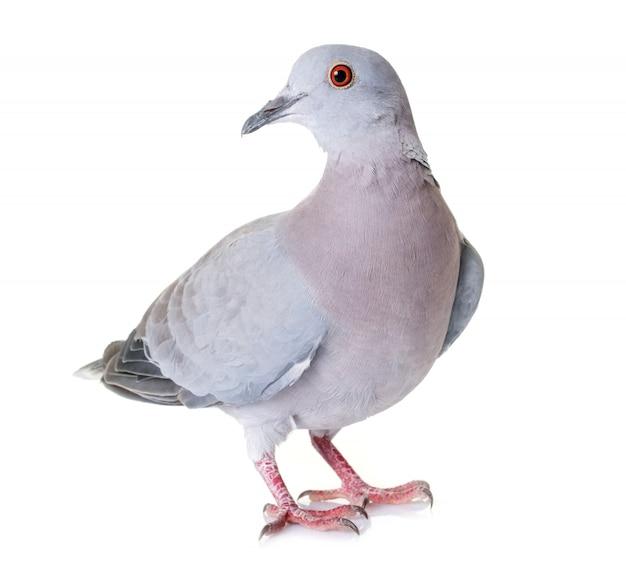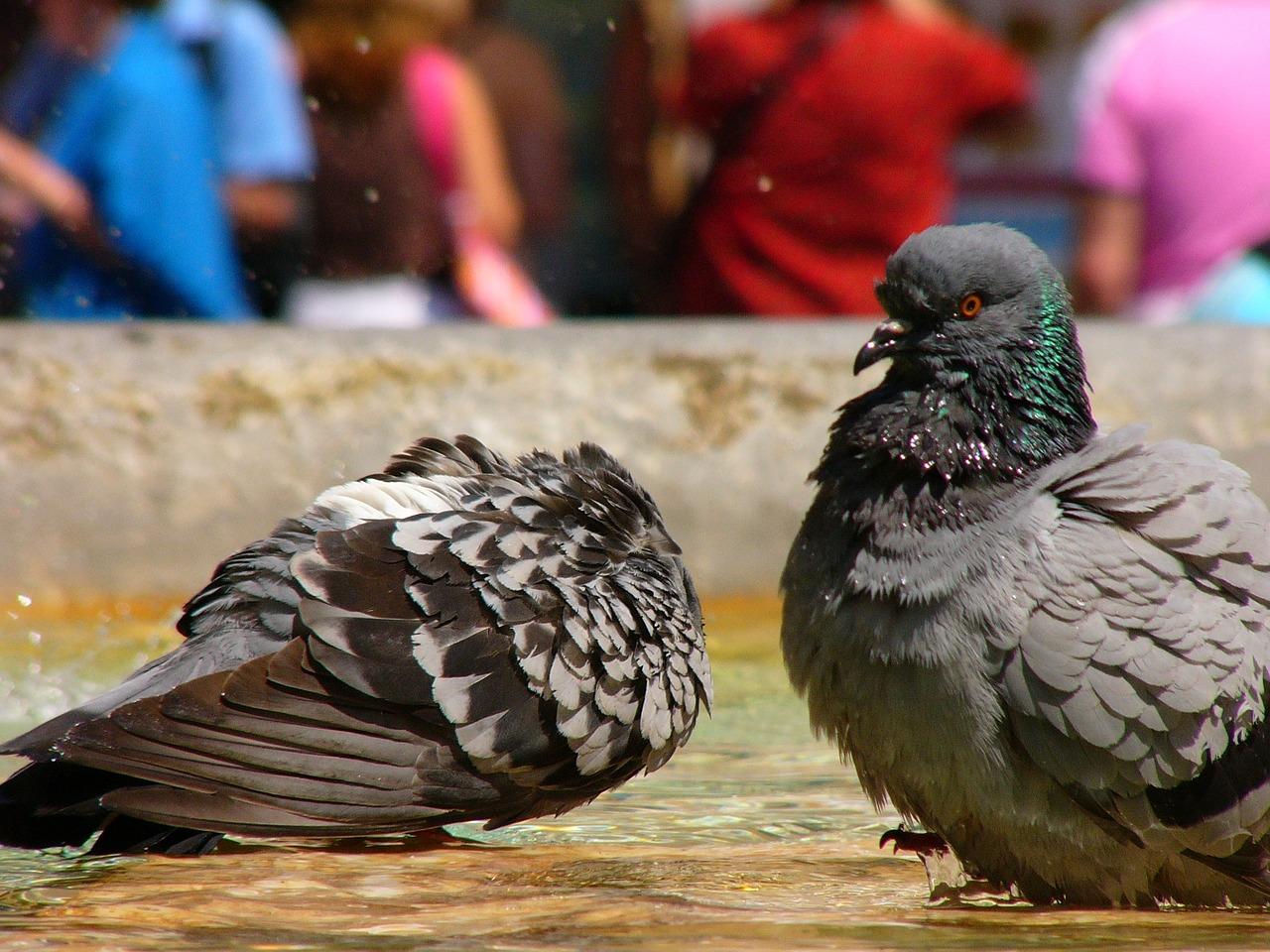Pigeons, often regarded as urban dwellers and symbols of city life, have managed to adapt and flourish in human-dominated environments. These feathered creatures possess a unique set of adaptations that enable them to thrive in their urban habitats. From physical characteristics to behavioral traits, pigeons have developed an impressive array of survival strategies. In this article, we will delve into the fascinating world of pigeon adaptations, exploring both their physical and behavioral traits.
Adaptations can be defined as the specialized features, behaviors, or attributes that allow an organism to better survive and reproduce in its environment. Pigeons have evolved several remarkable physical adaptations that aid their daily quest for survival. Additionally, their behavioral adaptations provide them with a distinctive edge over other bird species. So, let’s take a closer look at the incredible adaptations of these resilient urban aviators and uncover the secrets to their success!
What Type of Adaptations Do Pigeons Have
Pigeons, those plump and often underestimated birds, have some truly incredible adaptations that allow them to thrive in urban environments and fly through city skies with finesse. These adaptations, honed over centuries of evolution, are worth exploring to gain a better understanding and appreciation for these feathered creatures.
Nimble Wings for Urban Maneuvers
Pigeons possess wings that are perfectly designed for navigating the bustling urban landscapes. With an impressive wingspan of up to 2 feet, these avian acrobats can swiftly change direction mid-flight, making them true masters of agility. Their ability to maneuver between tall buildings and narrow alleyways with precision is nothing short of awe-inspiring.
City-Dwelling Navigational Skills
While some may think pigeons simply wander aimlessly, they actually have remarkable navigational abilities. Pigeons are known to possess an internal GPS system, allowing them to accurately navigate through complex city mazes. Scientists speculate that they rely on a combination of magnetic fields, sun position, and visual landmarks to find their way home. It’s like having a built-in GPS without the need for technology updates!
Fantastic Feather Adaptations
Pigeons have feathers that are tailor-made for city life. Their feathers are densely packed, providing insulation during cold weather and protection from the ever-present city grime. These feathers also have specialized barbs and hooks that allow them to interlock, creating a sturdy and aerodynamic surface for efficient flight. It’s like having a personal, self-assembling flying suit!
Multifunctional Beaks
Pigeon beaks may seem small, but they pack a punch when it comes to adaptability. These versatile beaks allow pigeons to indulge in a wide variety of diets, ranging from seeds and grains to small invertebrates and even discarded human food. Talk about being culinary opportunists! They say variety is the spice of life, and pigeons clearly took that to heart.
Phenomenal Hearing Abilities
Pigeons may not have impressive vocal skills like some of their avian counterparts, but they make up for it with their exceptional hearing abilities. Their ears may be hidden, but they are finely tuned to detect subtle sounds, such as the rustling of food packaging or the familiar footsteps of an eager feeder. Pigeons have truly mastered the art of eavesdropping in the city soundscape!
Survival Skills That Rival MacGyver
Pigeons have proven time and again that they are adaptable survivors in the concrete jungles. They can dodge speeding cars, evade predators, and find ingenious locations to nest—often utilizing building ledges and bridges as their makeshift homes. With their resourcefulness, pigeons have carved out a niche in the urban ecosystem, proving that it takes more than steel and glass to oust these resilient birds.
In conclusion, pigeons may seem like ordinary birds, but these incredible creatures possess a wide range of adaptations that allow them to thrive in urban environments. From their nimble wings and extraordinary navigational abilities to their multifunctional beaks and phenomenal hearing, pigeons are true urban avian marvels. Next time you see a pigeon strutting its stuff on the city streets, take a moment to appreciate the remarkable adaptations that make them city slickers par excellence.
FAQ – Pigeon Adaptations
What is a Behavioral Adaptation
Behavioral adaptations refer to the actions or behaviors that animals develop to survive and thrive in their environments. These adaptations involve changes in an animal’s behavior rather than its physical traits. Pigeons, with their fascinating behavior, have also evolved several behavioral adaptations.
What are 3 Examples of Physical Adaptations
Physical adaptations are changes in an animal’s body structure or form that help them survive in their environments. While pigeons exhibit various physical adaptations, here are three remarkable examples:
-
Beak Shape: Pigeons possess a unique beak shape that enables them to feed on various types of food, such as grains, seeds, and even small insects.
-
Eyesight: With excellent eyesight, pigeons can detect objects and movements from great distances. This adaptation helps them navigate and locate food sources efficiently.
-
Flight: Pigeons have strong muscles in their wings, allowing them to fly swiftly and cover long distances. Their streamlined body shape also aids in flight and maneuverability.
What are 5 Examples of Structural Adaptations
Structural adaptations are physical features that help an animal survive in its specific habitat. Pigeons have developed several structural adaptations to thrive in various environments. Here are five notable examples:
-
Feather Protection: Pigeons’ feathers have barbs and barbules that interlock, providing insulation and enhancing their flight abilities.
-
Crop: Pigeons have a crop, a specialized expansion of the esophagus, which stores and moistens the food they consume. This adaptation allows them to eat quickly and then digest their meal later.
-
Homing Instinct: Pigeons have an innate ability to find their way back home, even when placed in unfamiliar locations. This adaptation has been utilized for centuries by humans to carry messages over long distances.
-
Feet and Talons: Pigeons have feet with four toes, two pointing forward and two pointing backward. This unique foot structure helps them grip and perch on various surfaces with ease.
-
Ventilation System: Pigeons possess an efficient respiratory system that enables them to extract oxygen from the air at high altitudes. This adaptation allows them to fly at considerable heights without suffering from oxygen deprivation.
What are 3 Adaptations of a Bird
Birds, including pigeons, possess numerous adaptations that enable them to survive and thrive in their environments. Here are three notable adaptations of birds:
-
Feathers: Birds have feathers that provide insulation, enable flight, and aid in courtship displays and camouflage.
-
Hollow Bones: Bird bones are unique because they are lightweight and contain air spaces. This structural adaptation reduces the bird’s overall weight, making flight possible.
-
Internal Fertilization: Most birds have evolved internal fertilization, where the female’s reproductive system possesses a specialized chamber called the cloaca. This adaptation allows birds to reproduce efficiently on land, regardless of their habitat.
What is an Example of a Behavioral Adaptation
An interesting example of a behavioral adaptation in pigeons is their elaborate courtship rituals. Male pigeons will often strut and coo in an attempt to attract a mate. This behavior serves as a way to establish dominance, communicate fertility, and find a suitable partner.
How do Snails Respond to the Environment
Snails, like many other animals, exhibit various adaptations to respond to their environments. For instance, when exposed to dry conditions, snails retreat into their shells and seal the opening with a layer of mucus. This adaptation helps them retain moisture and survive until more favorable conditions return.
What Type of Adaptations do Pigeons have
Pigeons have both physical and behavioral adaptations that aid their survival. Some key adaptations include their versatile beak shape, exceptional eyesight, strong flight capabilities, and the innate ability to find their way back to their roost through their homing instinct.
What are the Features of a Snail
Snails have distinct features that contribute to their survival. These include a coiled shell, a slimy mucus layer that aids movement and moisture retention, a foot for locomotion, tentacles with eyes to detect light and movement, and a specialized feeding structure called a radula.
What are the 4 Types of Adaptations
Adaptations can be classified into four main types:
-
Structural Adaptations: These involve changes in an organism’s physical features, such as body shape, fur, or beak structure.
-
Physiological Adaptations: These adaptations occur at the cellular level and involve changes in an organism’s internal functions and processes.
-
Behavioral Adaptations: These involve changes in an organism’s behavior to improve its chances of survival and reproduction.
-
Functional Adaptations: These adaptations refer to changes in an organism’s physiological functions or behavior in response to specific environmental conditions.
What is Adaptation, and Can You Explain with an Example
Adaptation is a process wherein organisms change or develop characteristics, both physical and behavioral, to better suit their environment and increase their chances of survival. Take the example of the chameleon, which has the ability to change its skin color to blend with its surroundings. This adaptation helps the chameleon camouflage itself and avoid predation.
What are Two Examples of Animal Adaptations
There are countless examples of animal adaptations, but two notable ones are:
-
Camouflage: Many animals, such as the chameleon mentioned earlier, have developed the ability to blend into their environments. This adaptation serves as a means of protection from predators.
-
Hibernation: Some animals adapt to seasonal changes by entering a state of hibernation. During this period, their metabolic rates and body functions slow down to conserve energy until more favorable conditions return.
What are 2 Types of Behavioral Adaptation
Behavioral adaptations can be categorized into two types:
-
Instinctive Behavior: This type of adaptation is genetically programmed into an animal and is not learned. Examples include migration, courtship rituals, and nest building.
-
Learned Behavior: Animals can also learn and modify their behavior based on experience. This adaptation allows them to adjust to changing circumstances and improve their chances of survival. An example is a bird that learns to extract food from a new source.
That’s it for this comprehensive FAQ section on pigeon adaptations. If you have more questions or want to dive deeper into the fascinating world of animal adaptations, feel free to explore the rest of our blog!

